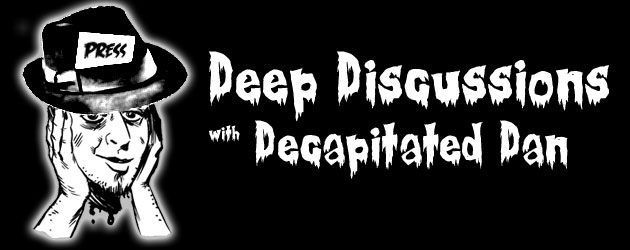
Welcome back kiddies. This time I have lured Giovanni Rigano into the depths to pick his brain about all things Daffodil and his other books. So sit back and relax as we find out why we should all be reading his stuff and what the future holds for this great Italian artist.
Decapitated Dan: Alright let’s start off simple: who is Giovanni Rigano?
 Giovanni Rigano: It’s hard to say. Let’s try like this: when I was a child, ten years old or so, I’ve been on holiday with my father in Florence. It was summer and the town was all around me with its beauty. We had a walk in the center, I was reading a comic book. At one point my father told me to stop for a while. He had to enter in a bar to go to the toilette. I said “Yes Dad, sure” while I kept on reading the comic book. After 30 seconds I raised my head up and I didn’t remember anything. So I came back to the car which was quite far away. Waiting for my father to pick me up I finished my comic book.
Giovanni Rigano: It’s hard to say. Let’s try like this: when I was a child, ten years old or so, I’ve been on holiday with my father in Florence. It was summer and the town was all around me with its beauty. We had a walk in the center, I was reading a comic book. At one point my father told me to stop for a while. He had to enter in a bar to go to the toilette. I said “Yes Dad, sure” while I kept on reading the comic book. After 30 seconds I raised my head up and I didn’t remember anything. So I came back to the car which was quite far away. Waiting for my father to pick me up I finished my comic book.
DD: How did you get your start in comics?
GR: Professionally I finished The Disney Academy of Milan and I started working for them. In Scholastic terms when I chose to do, at 18 years old, the School of Comics. Personally when I told my parents I wanted to be a comic book artist. I was 15 years old and just started scientific studies. But I can see my start even before, when I was too young to read and my mother used to read comics for me. I’m not saying it’s destiny, just that now I can see a line that lead me where I am now, and it’s hard to say when it get started.
DD: What have you done so far in the comic book industry?
GR: Quite a lot, I guess. I’ve been working for many years with Disney, making comic books and graphic novels with most of their properties, starting from The The Incredibles to Pirates of the Caribbean and Lilo & Stitch. I visualized the amazing universe of Artemis Fowl series with two Graphic Novels, adapted by Eoin Colfer, the Series’ Author, and Andrew Donkin. I did two personal comic book series in France, teamed up with great writers such as Frederic Brémaud and Bruno Enna, and I also made illustrations for a book of Gothic Poetry entitled Il Teatrino delle Bambole Morte, written by Davide Barzi, of which I’m really proud.
DD: Was working in comic books something you always wanted to do?
 GR: As I may remember, yes. But I do also remember that when I was a child I wanted to be a scientist, an astronaut and a documentary maker too. By the years then I discovered I was not so good in math, I suffer slightly of dizziness and I’m allergic to pollen. So, how do I know I’m a comicbook artist just because I wasn’t good at anything else?
GR: As I may remember, yes. But I do also remember that when I was a child I wanted to be a scientist, an astronaut and a documentary maker too. By the years then I discovered I was not so good in math, I suffer slightly of dizziness and I’m allergic to pollen. So, how do I know I’m a comicbook artist just because I wasn’t good at anything else?
DD: Let’s just dive right in. What is Daffodil?
GR: It’s my first personal experience in french comics, my first try to do something other than Disney and my first book where I completely invented the overall style and character designs. The story was written by Frederic Brémaud and it’s about the coexistence between vampires and humans. If vampires kill too many humans, it means lack of food. So there are some agents and a vampire government who take care that this won’t happen.
The first two issues are about Nosferatu moving his army to a town called Addio-Colonnello and killing everybody at his passage. He’s breaking the rules, so he has to be stopped. But why he’s doing that? Is Is there a secret plan or it’s just lust for blood?
The third issue is about an ancient vampire gone crazy and some mysterious deaths in a wood around a small village. The hunt begins. But who is the real monster?
DD: Who are the main characters?
GR: They’re three vampires agents. A sort of Charlie’s Angels in a evil way. Their job is seeking and , if necessary, kill other vampires who disobey to the rules of their Clan. But in fact they also represent three different ways for a vampire to approach his thirst of blood. Daffodil, the teams leader, is the only one who feels compassion for her human victims. Globuline, is only for greed, she doesn’t make questions. She’s nice but a bit naive, so she’s able to do anything. Achilles, is simply evil. She knows exactly how it goes and feels good with death, pain and misery. She’s Goth. The real vampire among the two others.
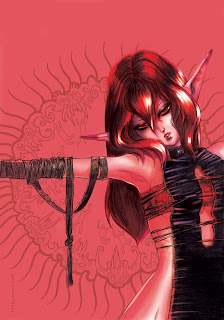 DD: How did you come up with the character designs?
DD: How did you come up with the character designs?
GR: Making lot of sketches and never being satisfied. When you approach for the first time a project where you can do nearly whatever you want, while you are used instead to work with several references and somebody else’s characters, you start wondering, “What I’m doing, does this really represent me?” The answer is usually yes, because it’s a mix of your previous experiences, your sensibility and your culture. Just the fact of making some questions leads you to evolve more and more.
DD: Your artwork in the book is an amazing mix of cartoon fun and bloody images. Do you have as much fun drawing this book as I have looking at it?
GR: Wish you had much more! When I work on a project I’m totally focused on it, so I’m not having fun, not properly at least. Maybe later, at the end of the project, looking back at it I can say I had fun. But it’s a bit different.
DD: I read that you had a different approach to each issue. Why was that?
GR: Basically I needed to find my way of making comics, not so influenced by my previous Disney experience. So in each issue I carried on asking myself “Okay, this is what I’ve done. How can I do it differently?”
DD: In regards to the previous question. While I noticed it in issues #3 (Marvel printing), I did not notice the style change from issues #1 and #2. Was the story divided up differently for us?
GR: No, it’s divided up exactly the same way. It’s just that the first two issues compose one story, so I didn’t want to cut up completely with the first part while making the second. There are some small changes – more details in the backgrounds, characters and narration a bit more adult – but nothing impressive. The third issue instead is a one shot, not connected with the previous two. So I felt free to make it more different.
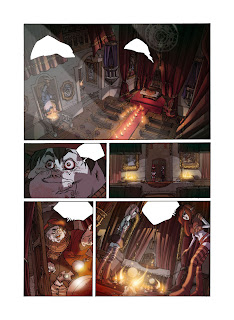 DD: How did you get brought in to work on Daffodil?
DD: How did you get brought in to work on Daffodil?
GR: During a festival in France a friend introduced me Frederic at the stand of Soleil Productions. He looked at some sketches I had with me, and he spoke about a new project with vampires he wanted to develop. So we started working on it. After a couple of years he confessed that I reminded him a bit Nosferatu at that time because I was skinny, pale and with a short haircut. So he had the idea. It’s funny!
DD: Was the book a big success in Europe?
GR: Not a big one in terms of selling. Just a good one. But it gave me much more visibility than I ever thought. It’s four or five years now the latest issue has been released in France and still there are lots of people at festivals asking me for a signature or a sketch for that series. I can say that it didn’t sell so much but most of the readers really loved it!
DD: What were your thoughts when you found out that it would be published in North America?
GR: I said “Wow! Daffodil will be published by Marvel!” I never expected that, so I was really happy. I found a bit ironic when Disney bought Marvel.
DD: Do you think that the American audience has responded well to the book?
GR: Guess it’s too early now to tell. Many people were interested about the US release and we received good critics. We’ll see!
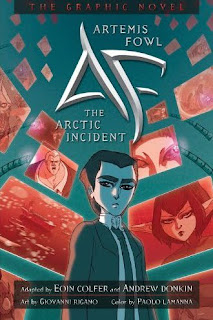 DD: What countries has Daffodil been released in so far, and which has the strongest following?
DD: What countries has Daffodil been released in so far, and which has the strongest following?
GR: Daffodil can be found in France, Belgium, Canada, Italy and Spain so far. But for sure in France and Belgium we had the best result!
DD: Do you think that the book translates well into the other languages? Are some things lost?
GR: In Italy there were two different editions and translation in the second one was a mess, unfortunately. The US edition is really well done and the humor in dialogues was well kept.
DD: Can we expect to see more of the Daffodil universe in the future? There is a great big universe to discover after all, and I know I want to read more.
GR: It’s not planned yet. Maybe in the future. There are some ideas about it and I must confess I’m quite curious about how it could be a fourth issue after all these years. But at the moment I’m so busy in many other projects that I wouldn’t really find the time to work on it.
DD: Other than Daffodil, what other books are you working on? Can you give us descriptions?
GR: In January has been published in France, for the Métamorphose Collection by Soleil Editions, the first issue of a new series entitled Coeur de Papier. It’s a Graphic Novel in three issues, an absolutely dark fairy tale. Bruno Enna, one of the best Italian comic book writers, did the script and we’re receiving a lot of great critics for it! The story is about a child, Kriss Bottomwine, who arrives in a very weird orphanage after he received an operation to his heart. There he will discover that breaking the rules could be much more dangerous than it seems.
These days I’ve just finished the first half of Gothic Lolita, another Graphic Novel in two issues planned to be published in France at the end of this year. The Novel will lead the reader in a future not much far away, where experiments with human brains will take the world into chaos and violence.
And finally I’m going to start a new adaptation from another book, but it’s too early now to speak about.
DD: Can we expect to see versions of them printed in North America?
GR: Both books, Coeur de Papier and Gothic Lolita, are planned to be published in US soon, but I can’t tell now exactly when and for which publisher.
DD: How hard is it as a European creator to get your work to be seen in North America?
GR: I don’t really know how many European comic books are translated in the US. Not many, I guess. But there are lots of Italian, Spanish and French artists, who work for Marvel, DC comics and other US publishers. This is another good way to discover their art.
DD: What do you find are the main differences between an American and European comic scene?
GR: Well, I don’t know much the US comic scene. I can say that in Europe there is not only one comic scene but many, and every country has its own way to relate with comics.
DD: Are you a horror comic fan? If so, what titles inspire you?
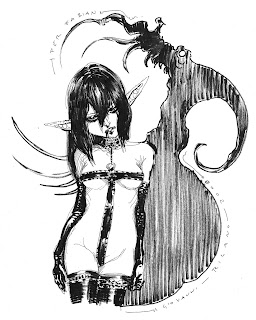 GR: The only one I follow since I was a child is Dylan Dog, an Italian horror comic series very well done. But I always read many horror books, from Edgar Allan Poe to H. P. Lovecraft – and Stephen King, of course -, and watched many movies. I’ve found this really weird because they make me scary a lot. Doing horror comics must be a sort of exorcism!
GR: The only one I follow since I was a child is Dylan Dog, an Italian horror comic series very well done. But I always read many horror books, from Edgar Allan Poe to H. P. Lovecraft – and Stephen King, of course -, and watched many movies. I’ve found this really weird because they make me scary a lot. Doing horror comics must be a sort of exorcism!
DD: What comic books are you currently reading? Are there any American ones?
GR: Not many, at the moment. Just a lot of books. The latest I’ve started is Shutter Island by Dennis Lehane. A great writer!
DD: Alright we can wrap it up with two questions. First, what do you want people to know about your work?
GR: This is one of the few jobs where anything left to say about your work is in the work in itself!
DD: Second, why should we all read Daffodil?
GR: I don’t think you all should read it. But probably somebody should.
DD: Thank you so much Giovanni. I appreciate it and hope everyone can read this great series, and that we can get a chance to see more of your work here in North America.
GR: Many Thanks to you too Dan. I’m happy you enjoyed the book and gave me the opportunity to speak of it.
_________________________
To learn more about Giovanni, please go to http://riganogiovanni.blogspot.com/. You can currently get issues of Daffodil through your local comic shops.



Seems like quite an interesting fellow. I love it when Europeans say “holiday” instead of vacation as Americans do. lol He has a really sleek style to his work.
Pingback: uberVU - social comments